In the annals of horological history, few timepieces carry the weight of legacy quite like the A-11 military watch. Often referred to as "the watch that won the war," this unassuming 30mm timepiece became the heartbeat of America's military operations during World War II, synchronizing the movements of the Greatest Generation as they fought across multiple theaters of war. From the beaches of Normandy to the islands of the Pacific, the A-11 served as more than just a timekeeping device—it was a critical piece of military equipment that helped coordinate some of the most pivotal moments in human history.
The story of the A-11 is intrinsically woven into the fabric of American manufacturing prowess, military precision, and the indomitable spirit of a generation that refused to accept defeat. This comprehensive examination explores not only the technical specifications and manufacturing details of this iconic timepiece but also its profound impact on military operations, its role in shaping modern military timekeeping standards, and its enduring legacy in today's watch collecting community. Modern companies like Praesidus continue this heritage with authentic recreations including the A-11 Type 44, A-11 Combat 32, and other military-inspired timepieces.
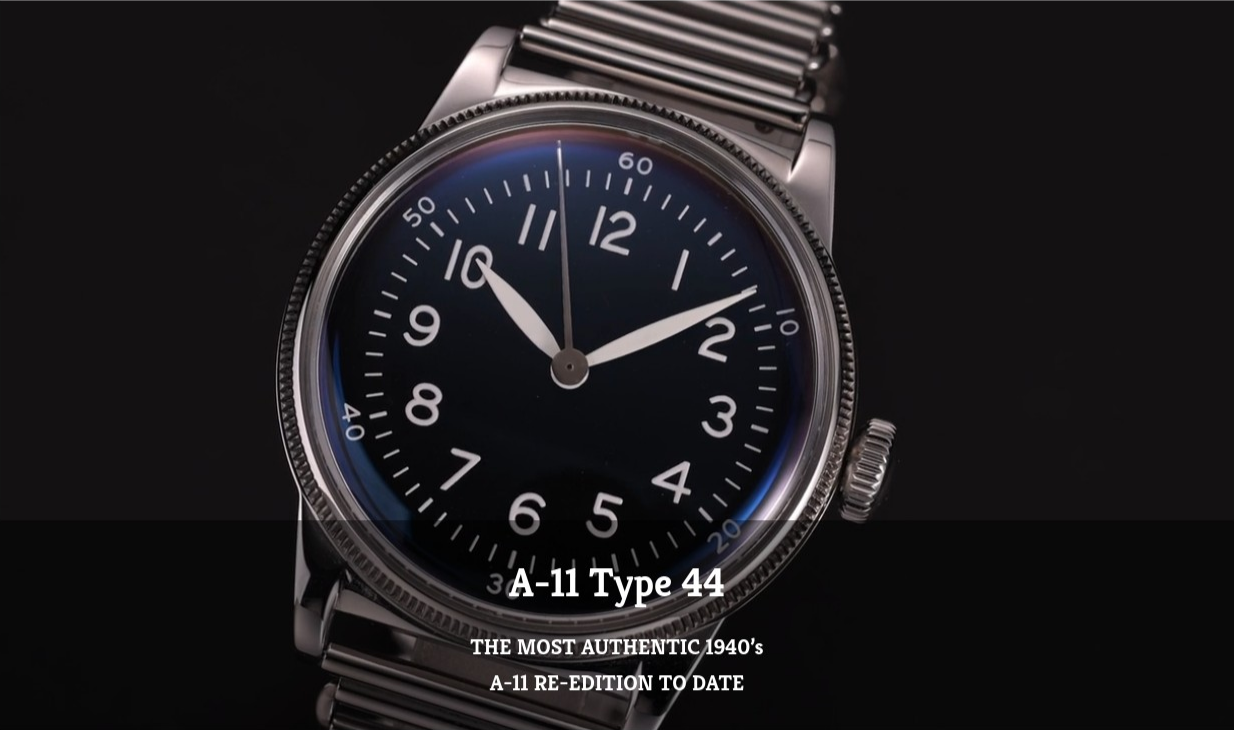
The Genesis of Military Timekeeping
The evolution of military timekeeping represents one of the most fascinating intersections of technology, strategy, and human ingenuity in modern warfare. Prior to World War II, military operations relied heavily on pocket watches, which, while accurate, proved cumbersome and impractical for the fast-paced, hands-on nature of modern combat. The transition from pocket watches to wristwatches in military applications marked a fundamental shift in how armed forces approached coordination and tactical execution.
The concept of standardized military timekeeping emerged from the harsh lessons learned during World War I, where miscommunication and poor synchronization led to catastrophic losses and missed opportunities. Military strategists recognized that successful operations required not just brave soldiers and superior equipment, but also precise coordination that could only be achieved through reliable, standardized timekeeping devices. This realization set the stage for what would become one of the most important procurement programs in American military history.
The United States military's approach to timekeeping standardization was characteristically systematic and thorough. Rather than simply adapting existing civilian timepieces for military use, the U.S. Government recognized the need for purpose-built instruments that could withstand the rigors of combat while maintaining the precision necessary for complex military operations. This philosophy would prove instrumental in the development of the A-11 specification, which represented a quantum leap forward in military timekeeping technology.
The timing of this initiative proved fortuitous, as America's entry into World War II created an unprecedented demand for reliable military timepieces. The scale of operations, from coordinating massive amphibious landings to synchronizing air raids across multiple time zones, required a level of temporal precision that had never before been attempted in military history. The A-11 would emerge as the solution to this critical need, embodying the perfect marriage of American manufacturing capability and military requirements.
The Birth of the A-11 Specification
The development of the A-11 military watch specification represents one of the most successful examples of government-industry collaboration in American history. In 1942, as the United States fully committed to the war effort, the U.S. Government issued detailed specifications for a standardized military timepiece that would serve across all branches of the armed forces [1]. This specification, designated as the A-11, was revolutionary in its comprehensiveness and attention to detail, establishing standards that would influence military timekeeping for decades to come.
The A-11 specification was born from extensive consultation with military personnel across various branches and theaters of operation. Input from pilots, navigators, infantry soldiers, and naval officers helped shape a comprehensive set of requirements that addressed the diverse needs of modern warfare. The specification called for a timepiece that could function reliably in extreme temperatures, resist shock and vibration, maintain accuracy under stress, and provide clear legibility in low-light conditions [2].
Central to the A-11 specification was the requirement for a hacking movement—a feature that allowed the seconds hand to be stopped when the crown was pulled out, enabling precise synchronization between multiple timepieces [3]. This seemingly simple feature proved crucial for military operations where split-second timing could mean the difference between success and failure. The ability to synchronize watches down to the second enabled coordinated attacks, precise navigation, and effective communication protocols that were previously impossible to achieve.
The specification also mandated the use of a minimum 15-jewel movement, ensuring both accuracy and longevity under harsh conditions [4]. This requirement represented a significant upgrade from many civilian timepieces of the era, which often used fewer jewels to reduce costs. The military's willingness to invest in higher-quality movements demonstrated their understanding that reliability in combat situations was worth the additional expense.
Physical specifications were equally detailed, calling for a 30mm case diameter that balanced readability with practicality [5]. The relatively small size by today's standards was intentional, designed to fit comfortably under military uniforms and gloves while remaining unobtrusive during combat operations. The specification also required luminous numerals and hands for nighttime visibility, a feature that would prove invaluable during night operations and dawn attacks.
The Trinity of American Manufacturing
The production of A-11 watches represented a remarkable achievement in American manufacturing coordination, involving three of the nation's most prestigious watchmaking companies: Elgin, Waltham, and Bulova [6]. This triumvirate of American horological excellence brought together decades of combined experience, innovative manufacturing techniques, and an unwavering commitment to quality that would define the A-11's legendary reliability.
The Elgin National Watch Company, founded in 1864 in Elgin, Illinois, brought to the A-11 project a rich heritage of precision timekeeping and innovative manufacturing processes. Elgin's contribution to the war effort extended far beyond simple production; the company's engineers worked closely with military specifications teams to refine manufacturing processes that could maintain quality while achieving the massive production volumes required by wartime demand. Elgin's A-11 watches were distinguished by their exceptional accuracy and robust construction, characteristics that made them particularly popular among pilots and navigators who required absolute precision for their calculations.
The American Waltham Watch Company, established in 1850 in Waltham, Massachusetts, represented the pinnacle of American watchmaking tradition and innovation. Waltham's approach to A-11 production emphasized durability and reliability, incorporating manufacturing techniques that had been refined over nearly a century of American watchmaking. The company's deep understanding of precision manufacturing allowed them to consistently produce A-11 watches that met or exceeded military specifications, even under the pressure of wartime production quotas.
Bulova, the youngest of the three manufacturers but no less capable, brought a fresh perspective to A-11 production with innovative manufacturing techniques and quality control processes. Founded in 1875 by Joseph Bulova, the company had established itself as a leader in precision timekeeping and mass production techniques. Bulova's A-11 watches were renowned for their consistent quality and innovative features, including advanced luminous materials that provided superior visibility in low-light conditions.
The collaboration between these three manufacturers created a production system that was both competitive and cooperative. While each company maintained its own manufacturing processes and quality standards, they shared technical innovations and best practices that benefited the entire program. This collaborative approach ensured that regardless of which manufacturer produced a particular A-11 watch, military personnel could rely on consistent performance and interchangeable parts.
Production volumes achieved by this manufacturing trinity were staggering by any measure. Conservative estimates suggest that over 1 million A-11 watches were produced during the war years, with some historians arguing that the actual number may have been significantly higher [7]. This massive production effort required unprecedented coordination of raw materials, manufacturing capacity, and quality control processes across three separate companies operating in different states.
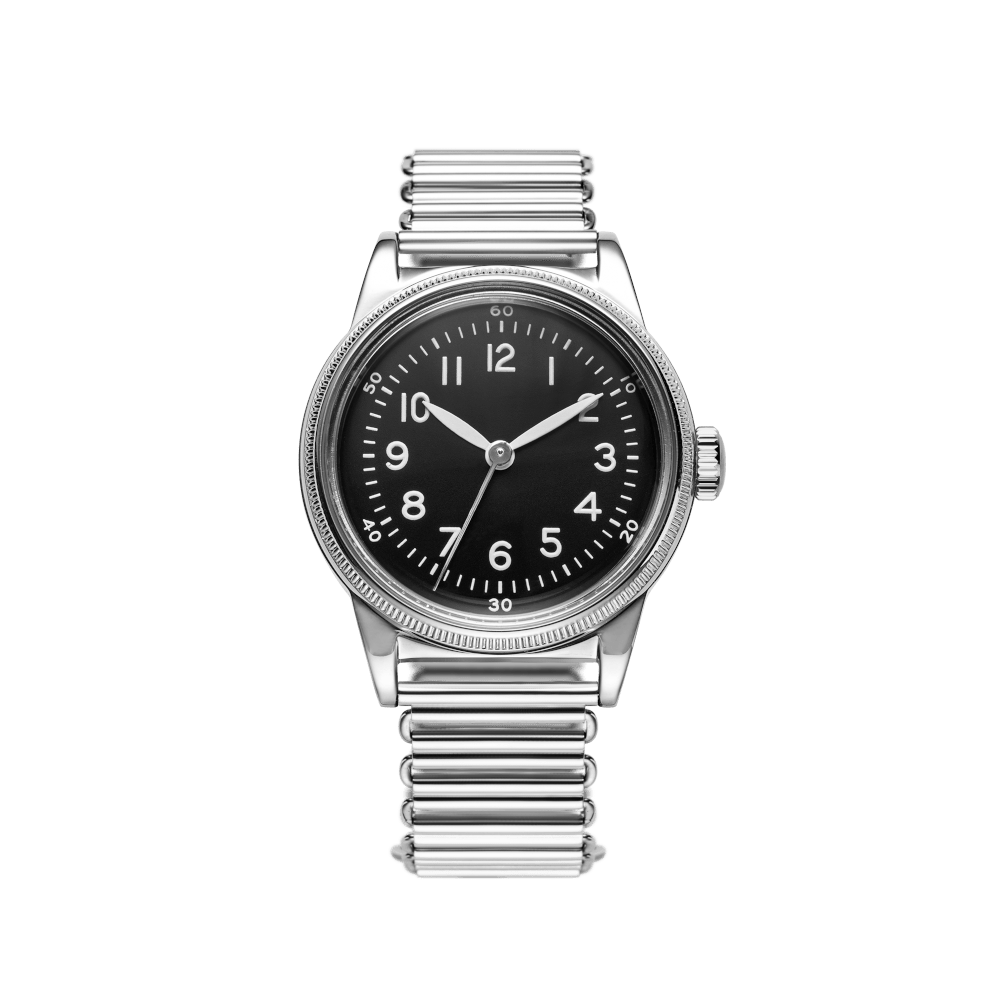
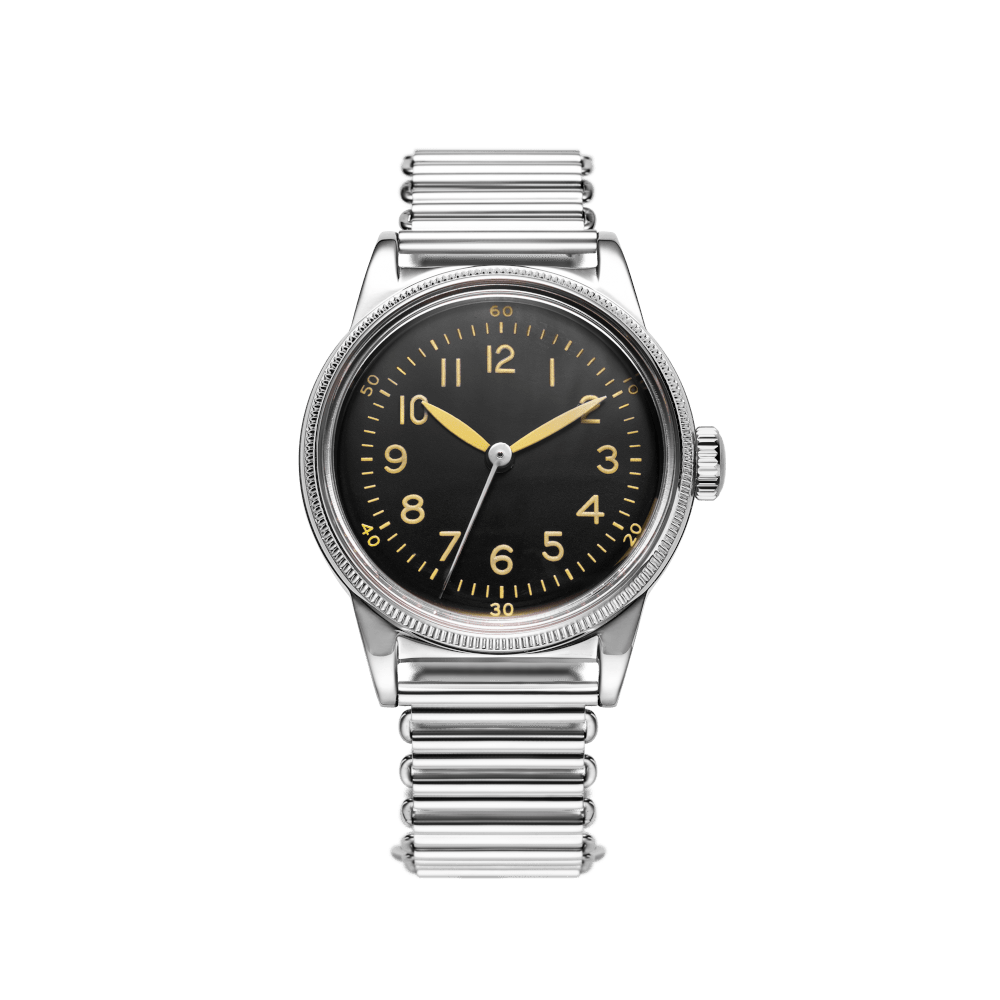
Technical Specifications and Innovation
The technical specifications of the A-11 military watch represented a perfect balance between functionality, durability, and manufacturability that has rarely been equaled in horological history. Every aspect of the watch's design was carefully considered to meet the demanding requirements of military service while remaining practical to produce in large quantities under wartime conditions.
The heart of every A-11 was its precision movement, which varied slightly between manufacturers but consistently met the stringent requirements of the military specification. The movement featured a minimum of 15 jewels, strategically placed to reduce friction and wear in critical areas [8]. This jewel count represented a significant upgrade from many civilian timepieces of the era, reflecting the military's understanding that reliability in combat situations justified the additional cost and complexity. For modern collectors interested in understanding these technical aspects, our guide to watch movements and their differences provides comprehensive insights into how these mechanisms function.
The hacking feature, perhaps the most militarily significant aspect of the A-11's movement, allowed soldiers to synchronize their timepieces with unprecedented precision. When the crown was pulled to the time-setting position, the seconds hand would stop immediately, allowing multiple personnel to coordinate their watches to the exact second [9]. This feature proved invaluable for coordinated attacks, navigation timing, and communication protocols where precise synchronization was critical to mission success.
Accuracy standards for the A-11 were remarkably stringent for a mass-produced timepiece of the 1940s. Original models were accurate to approximately 30 seconds per day, a level of precision that compared favorably with much more expensive civilian timepieces of the era [10]. This accuracy was maintained through careful regulation of each movement and rigorous quality control processes that ensured every watch met military standards before deployment.
Power reserve was another critical specification, with A-11 watches required to maintain operation for 30 to 56 hours when fully wound, depending on the specific movement and manufacturer [11]. This extended power reserve ensured that soldiers could rely on their timepieces even during extended periods when winding might be impractical or dangerous. The variation in power reserve between different manufacturers reflected their individual approaches to movement design and mainspring specifications.
The case construction of the A-11 represented a masterclass in functional design, balancing durability with practicality in a compact 30mm diameter. The relatively small size by modern standards was intentional, designed to fit comfortably under military uniforms and equipment while remaining easily readable [12]. The case was typically constructed from nickel or silver-plated brass, materials chosen for their durability, corrosion resistance, and availability during wartime material shortages.
Dial design prioritized legibility above all other considerations, featuring high-contrast black dials with white numerals and hands. The stark contrast ensured maximum readability in various lighting conditions, from the bright sunlight of desert operations to the dim light of dawn attacks. Luminous material was applied to both numerals and hands, providing visibility during nighttime operations when artificial light sources might compromise operational security.
The crystal was typically made from acrylic or mineral glass, materials that provided adequate protection while remaining cost-effective for mass production. While not as scratch-resistant as modern sapphire crystals, these materials were chosen for their impact resistance and the ability to be easily replaced in field conditions if damaged. For those curious about modern crystal technology and durability, our article on sapphire crystal scratch resistance explores how contemporary materials compare to vintage specifications.
Water resistance, while not specified to modern standards, was achieved through careful case construction and gasket design. While A-11 watches were not designed for underwater operations, they provided adequate protection against rain, humidity, and incidental water exposure that soldiers might encounter in various combat environments. Modern A-11 recreations often pair beautifully with period-appropriate accessories that enhance both functionality and historical authenticity.
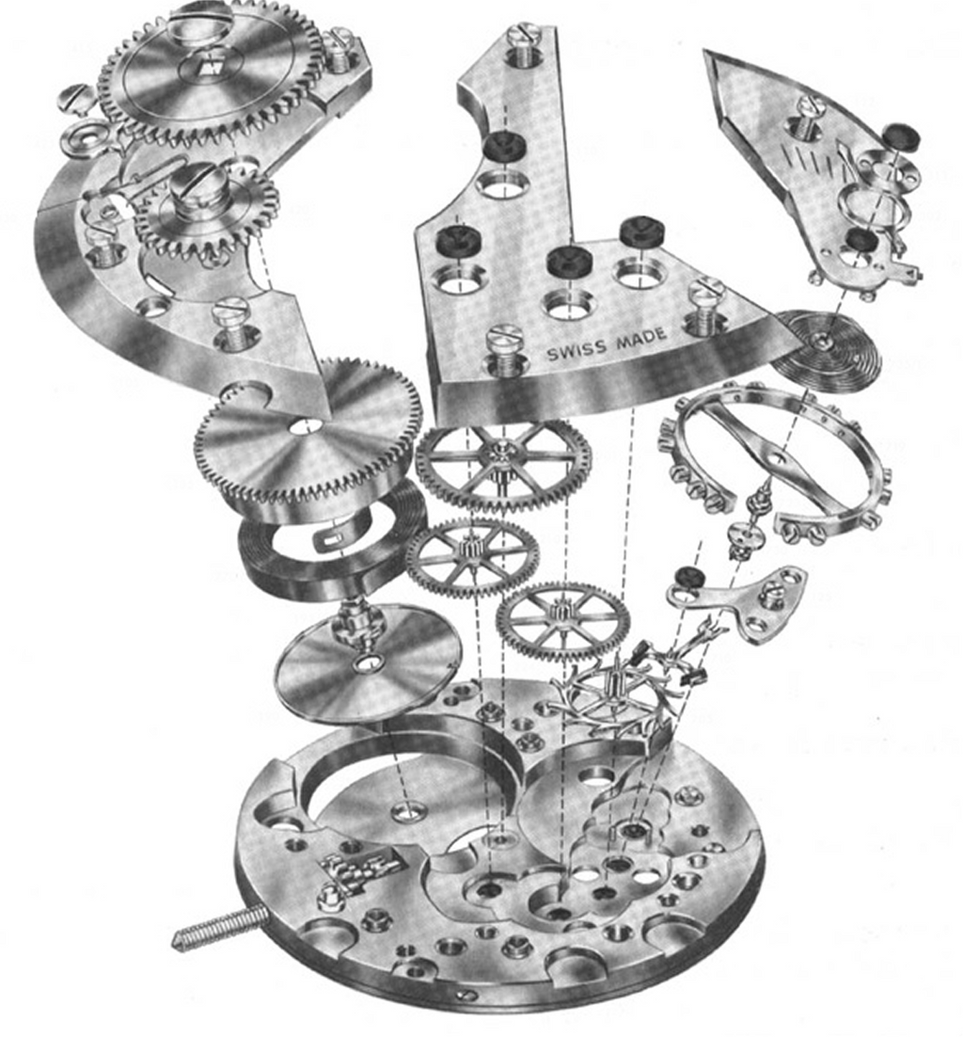
The A-11 in Combat: Theater-by-Theater Analysis
The true measure of the A-11's success lies not in its technical specifications or production numbers, but in its performance under the extreme conditions of World War II combat operations. Across every major theater of the war, from the frozen battlefields of the Eastern Front to the sweltering jungles of the Pacific, the A-11 proved its worth as an indispensable tool of modern warfare.
European Theater Operations
In the European Theater, the A-11 played a crucial role in some of the most complex and coordinated military operations in history. The D-Day landings at Normandy on June 6, 1944, represent perhaps the most famous example of the A-11's contribution to military success. The operation required unprecedented coordination between air, sea, and land forces, with timing measured not in minutes but in seconds [13].
The complexity of Operation Overlord demanded that thousands of personnel across multiple services and nationalities maintain precise synchronization. From paratroopers jumping behind enemy lines in the pre-dawn hours to naval gunners providing covering fire for the beach landings, every aspect of the operation depended on accurate timekeeping. The A-11's hacking feature proved invaluable in this context, allowing commanders to synchronize their forces with the precision necessary for such a complex undertaking.
Personal accounts from D-Day veterans frequently mention their A-11 watches, often describing them as lifelines that helped them navigate the chaos of combat. Lieutenant Colonel James Earl Rudder, who led the 2nd Ranger Battalion in the assault on Pointe du Hoc, reportedly relied on his A-11 to coordinate the timing of his unit's advance, ensuring that they reached their objectives in coordination with supporting naval gunfire [14].
The Battle of the Bulge, fought during the harsh winter of 1944-1945, provided another severe test of the A-11's reliability. In temperatures that often dropped well below freezing, many mechanical devices failed, but the A-11 continued to function reliably. Veterans of the battle frequently credited their watches with helping them maintain unit cohesion during the confusion of the German surprise attack, when traditional communication methods were disrupted or destroyed.
The precision bombing campaigns over Germany also relied heavily on A-11 timepieces for navigation and target timing. B-17 and B-24 bomber crews used their A-11 watches to coordinate with fighter escorts, navigate to targets, and time their bomb runs with the precision necessary to hit strategic targets while minimizing civilian casualties. The watches' accuracy and reliability at high altitudes and extreme temperatures made them indispensable tools for these dangerous missions.
Pacific Theater Challenges
The Pacific Theater presented unique challenges that tested the A-11's design in ways that European operations could not. The combination of extreme heat, humidity, saltwater exposure, and tropical diseases created an environment that was particularly harsh on mechanical devices. Yet the A-11 proved remarkably resilient, continuing to function reliably in conditions that destroyed many other pieces of equipment.
The island-hopping campaign that characterized much of the Pacific War required precise coordination between amphibious assault forces, naval gunfire support, and air cover. Each landing operation was a complex ballet of timing, with success often depending on split-second coordination between different elements of the assault force. The A-11's reliability in these conditions proved crucial to the success of operations from Guadalcanal to Okinawa.
Naval operations in the Pacific placed particular demands on timekeeping equipment, as ships operating in task forces needed to maintain precise coordination for both offensive operations and defensive formations. The A-11's resistance to the corrosive effects of saltwater and its ability to function reliably in the high-humidity environment of naval vessels made it an ideal choice for naval personnel.
The famous Doolittle Raid on Tokyo in April 1942, while conducted before the A-11 was widely distributed, highlighted the importance of precise timing in military operations. Later Pacific operations, conducted with A-11 timepieces, benefited from the lessons learned during the Doolittle Raid about the critical importance of timing in complex military operations.
Jungle warfare in places like Burma, the Philippines, and New Guinea presented additional challenges for timekeeping equipment. The combination of extreme humidity, temperature variations, and the corrosive effects of tropical vegetation tested the A-11's durability to its limits. Veterans of these campaigns frequently reported that their A-11 watches continued to function long after other equipment had succumbed to the harsh conditions.
Air Operations and Navigation
The role of the A-11 in air operations deserves special attention, as aviation presented some of the most demanding requirements for precision timekeeping during World War II. Pilots, navigators, and bombardiers relied on their A-11 watches not just for general timekeeping, but as critical navigation instruments that could mean the difference between successful mission completion and disaster.
Dead reckoning navigation, the primary method used by military aircraft during World War II, required precise timing to calculate position based on speed, heading, and elapsed time. The A-11's accuracy and reliability made it an indispensable tool for navigators attempting to find their targets or return to base across vast expanses of ocean or hostile territory. The watch's luminous dial proved particularly valuable during night operations, when external light sources might compromise operational security.
The precision bombing campaigns over Europe and Japan required extraordinary coordination between multiple aircraft, often involving hundreds of bombers flying in tight formation. The A-11's hacking feature allowed entire bomber groups to synchronize their timepieces before takeoff, ensuring that complex bombing patterns could be executed with the precision necessary to hit strategic targets while minimizing the risk of mid-air collisions.
Fighter pilots also relied heavily on their A-11 watches for fuel management and mission timing. With limited fuel capacity and no in-flight refueling capability, pilots needed to carefully monitor their flight time to ensure they could return to base safely. The A-11's accuracy and easy readability made it an ideal instrument for this critical task.
The Human Stories Behind the Timepieces
While the technical specifications and military applications of the A-11 are fascinating, the human stories behind these timepieces provide the most compelling testament to their significance. These watches were not merely instruments; they were companions that shared the most intense and dangerous moments of their owners' lives, creating bonds that lasted long after the war ended.
Personal Accounts from Veterans
The archives of military museums and veteran organizations are filled with stories that illustrate the deep personal connection that servicemen developed with their A-11 watches. These accounts provide insight not only into the watches' reliability and functionality but also into their psychological importance as symbols of home, normalcy, and hope during the darkest moments of the war.
Staff Sergeant William "Bill" Thompson of the 82nd Airborne Division carried his A-11 through the D-Day landings, the Battle of the Bulge, and the final push into Germany. In a letter home written in 1945, Thompson described his watch as "the one thing that never let me down," noting that it had continued to run accurately despite being submerged in the surf at Omaha Beach and frozen solid during the winter fighting in the Ardennes [15].
Lieutenant Robert Chen, a B-25 navigator in the Pacific Theater, credited his A-11 with saving his crew's lives during a mission over the Philippines in 1944. When their radio equipment was damaged by enemy fire, Chen used his watch to time their return flight, calculating fuel consumption and navigation waypoints with the precision necessary to reach their base with only minutes of fuel remaining [16].
Perhaps most poignantly, many A-11 watches became final links between fallen servicemen and their families. The personal effects returned to families often included these timepieces, still running and keeping accurate time despite the circumstances of their owners' deaths. These watches became treasured family heirlooms, passed down through generations as tangible connections to the sacrifice of the Greatest Generation.
The Watch as Psychological Anchor
Military psychologists have long recognized the importance of personal items in maintaining morale and psychological stability under the stress of combat. The A-11 watch served this function for many servicemen, providing a sense of continuity and normalcy in an environment where both were rare commodities.
The daily ritual of winding the watch became a meditative practice for many soldiers, a moment of calm routine in the chaos of war. Veterans frequently described the familiar weight of the watch on their wrist as a comforting presence, a reminder that time continued to pass and that the war would eventually end.
The watch's connection to home was particularly important for servicemen stationed far from the United States. By keeping their watches set to home time, many soldiers maintained a psychological connection to their families and civilian lives. This practice was so common that many veterans continued to keep multiple time zones after the war, a habit that served as a permanent reminder of their wartime service.
Post-War Legacy and Civilian Adoption
The end of World War II marked not the conclusion of the A-11's story, but rather the beginning of a new chapter that would see these military timepieces transition into civilian life and influence the development of the modern watch industry. The massive surplus of A-11 watches created by the war's end, combined with their proven reliability and distinctive military aesthetic, made them popular choices for veterans returning to civilian life.
The Surplus Market Phenomenon
The immediate post-war period saw an unprecedented flood of military surplus equipment entering the civilian market, and A-11 watches were among the most sought-after items. Military surplus stores across the United States offered these timepieces at a fraction of their original cost, making high-quality, precision timepieces accessible to a broader segment of the American population than ever before [17]. This democratization of quality timekeeping had profound effects on American society and the watch industry, a legacy that continues today through companies like Praesidus that honor veteran heritage and commemorate significant moments like Victory Day in their timepiece collections.
For the first time, working-class Americans could afford timepieces that rivaled the accuracy and reliability of expensive civilian watches. The A-11's military heritage also carried significant social cachet, as wearing one became a way for veterans to maintain their connection to their service and for civilians to show their appreciation for the military.
The surplus market also introduced many Americans to the concept of the tool watch—a timepiece designed primarily for function rather than fashion. This philosophy would later influence the development of modern sports watches and professional timepieces, establishing a market segment that continues to thrive today.
Influence on Commercial Watch Design
The success of the A-11 did not go unnoticed by commercial watch manufacturers, who began incorporating many of its design elements into civilian timepieces. The high-contrast dial design, luminous numerals and hands, and robust case construction became standard features in many post-war watch designs, establishing aesthetic and functional standards that continue to influence watch design today.
The concept of the field watch, now a standard category in the watch industry, can be traced directly to the A-11 and other military timepieces of the World War II era. Modern field watches from manufacturers like Hamilton, Seiko, and others still incorporate design elements and functional features that were pioneered in the A-11 specification.
The A-11's influence extended beyond mere aesthetics to fundamental questions about what a watch should be and do. The military's emphasis on reliability, accuracy, and functionality over decoration and luxury challenged the prevailing civilian watch market's focus on jewelry-like timepieces, helping to establish the market for tool watches that exists today.
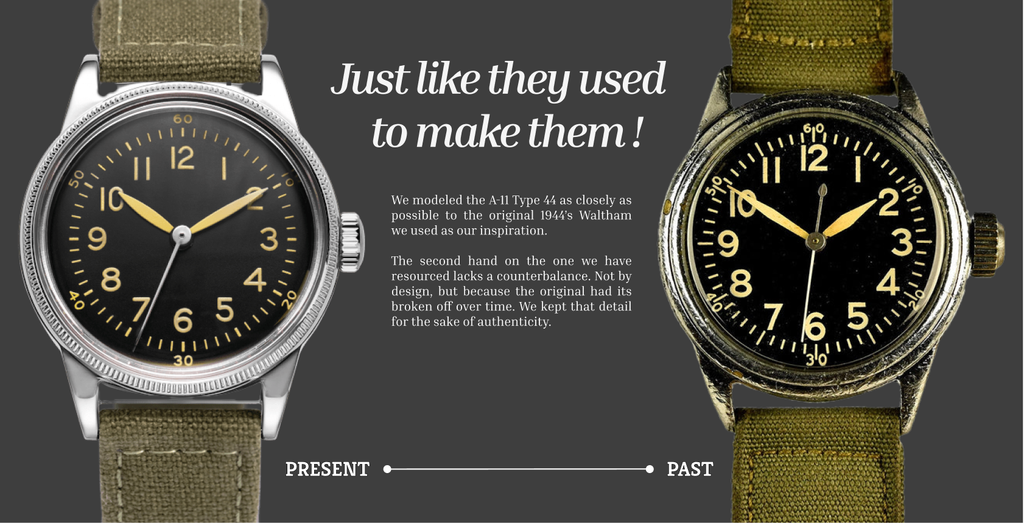
The Collector's Perspective: Modern Appreciation
In the decades since World War II, the A-11 has evolved from a utilitarian military instrument to one of the most sought-after collectible timepieces in the world. The combination of historical significance, proven reliability, and relative rarity has created a robust collector market that continues to grow as new generations discover the appeal of these remarkable timepieces. Modern collectors can explore authentic recreations through collections like the A-11 Origin and specialized editions such as the A-11 Marston Mat Edition, which honor specific military heritage and operations.
Market Dynamics and Values
The collector market for A-11 watches is characterized by strong demand and limited supply, creating conditions that have driven steady appreciation in values over the past several decades. Factors affecting value include manufacturer, condition, provenance, and the presence of original components such as dials, hands, and movements [18].
Watches produced by different manufacturers command different prices in the collector market, with certain variations being more highly prized than others. Elgin-produced A-11 watches, for example, are often valued slightly higher than their Waltham or Bulova counterparts due to perceived superior finishing and movement quality, though all three manufacturers produced timepieces that met the same military specifications.
Condition is perhaps the most critical factor in determining an A-11's collector value. Original, unrestored examples in excellent condition can command prices many times higher than similar watches that have been modified or restored. The presence of original radium luminous material, while potentially hazardous, is particularly prized by collectors as evidence of authenticity and originality.
Provenance—the documented history of a particular timepiece—can significantly impact value, especially when the watch can be connected to specific military units, operations, or individuals. A-11 watches with documented service in famous battles or with notable military personnel can command premium prices that reflect their historical significance beyond their horological merits.
Authentication and Collecting Challenges
The popularity of A-11 watches in the collector market has unfortunately led to the creation of numerous reproductions, modifications, and outright fakes that can trap unwary collectors. Understanding the subtle differences between authentic wartime A-11 watches and later reproductions requires considerable expertise and careful examination.
Authentic A-11 watches exhibit specific characteristics that are difficult to reproduce accurately. These include particular dial fonts and layouts, specific movement markings and serial number ranges, and construction details that reflect the manufacturing techniques and materials available during the 1940s. Collectors must also be aware of the common practice of "franken-watches"—timepieces assembled from parts of different watches or eras that may appear authentic but lack historical integrity.
The presence of radioactive radium luminous material in original A-11 watches presents both an authentication tool and a safety concern for collectors. While the radioactivity can be detected with appropriate equipment and serves as evidence of authenticity, collectors must take appropriate precautions when handling these timepieces and may need to have the luminous material professionally replaced for safety reasons.
Technical Analysis: Movement Variations and Specifications
A comprehensive understanding of the A-11 requires detailed examination of the various movements used by the three manufacturing companies, each of which brought their own engineering expertise and manufacturing traditions to the project. While all movements met the same military specifications, subtle differences in design and execution provide fascinating insights into American watchmaking capabilities during the 1940s.
Elgin Movement Characteristics
Elgin's approach to A-11 movement design emphasized precision and reliability, drawing on the company's long experience in producing high-quality timepieces for both civilian and professional markets. The Elgin A-11 movements typically featured superior finishing and attention to detail that reflected the company's commitment to horological excellence.
The jeweling system in Elgin A-11 movements was particularly well-executed, with jewels strategically placed to minimize friction and wear in critical areas. The company's experience in producing railroad watches—timepieces that required exceptional accuracy and reliability—proved invaluable in developing movements that could meet the demanding requirements of military service.
Elgin's regulation techniques were among the most sophisticated of the three manufacturers, resulting in movements that often exceeded the military's accuracy requirements. The company's quality control processes ensured consistent performance across production runs, making Elgin A-11 watches particularly prized by military personnel who required absolute reliability.
Waltham Engineering Excellence
The American Waltham Watch Company brought nearly a century of watchmaking experience to the A-11 project, and this heritage is evident in the robust construction and reliable performance of their movements. Waltham's approach emphasized durability and longevity, reflecting the company's understanding that military timepieces needed to function reliably under conditions far more severe than civilian use.
Waltham A-11 movements featured particularly robust mainspring systems that provided consistent power delivery throughout the watch's power reserve cycle. This attention to power management ensured that the watches maintained accurate timekeeping even as the mainspring wound down, a critical consideration for military personnel who might not have regular opportunities to wind their watches.
The company's shock resistance systems were among the most advanced of the era, incorporating design elements that helped protect the delicate balance wheel and hairspring from the impacts and vibrations common in military service. These protective measures contributed significantly to the legendary reliability of Waltham A-11 watches in combat conditions.
Bulova Innovation and Quality
Bulova's contribution to the A-11 program showcased the company's innovative approach to mass production and quality control. As the newest of the three manufacturers, Bulova brought fresh perspectives and modern manufacturing techniques to the project, resulting in movements that combined traditional watchmaking excellence with innovative production methods.
Bulova's quality control systems were particularly advanced, incorporating statistical sampling and testing procedures that ensured consistent quality across large production runs. The company's experience in producing timepieces for civilian markets had taught them the importance of maintaining quality while achieving the production volumes necessary for commercial success.
The finishing quality of Bulova A-11 movements was exceptional, with particular attention paid to the aesthetic details that, while not strictly necessary for function, reflected the company's commitment to excellence. This attention to detail extended to functional elements as well, with Bulova movements often featuring superior jewel settings and more precise adjustment mechanisms than strictly required by military specifications.
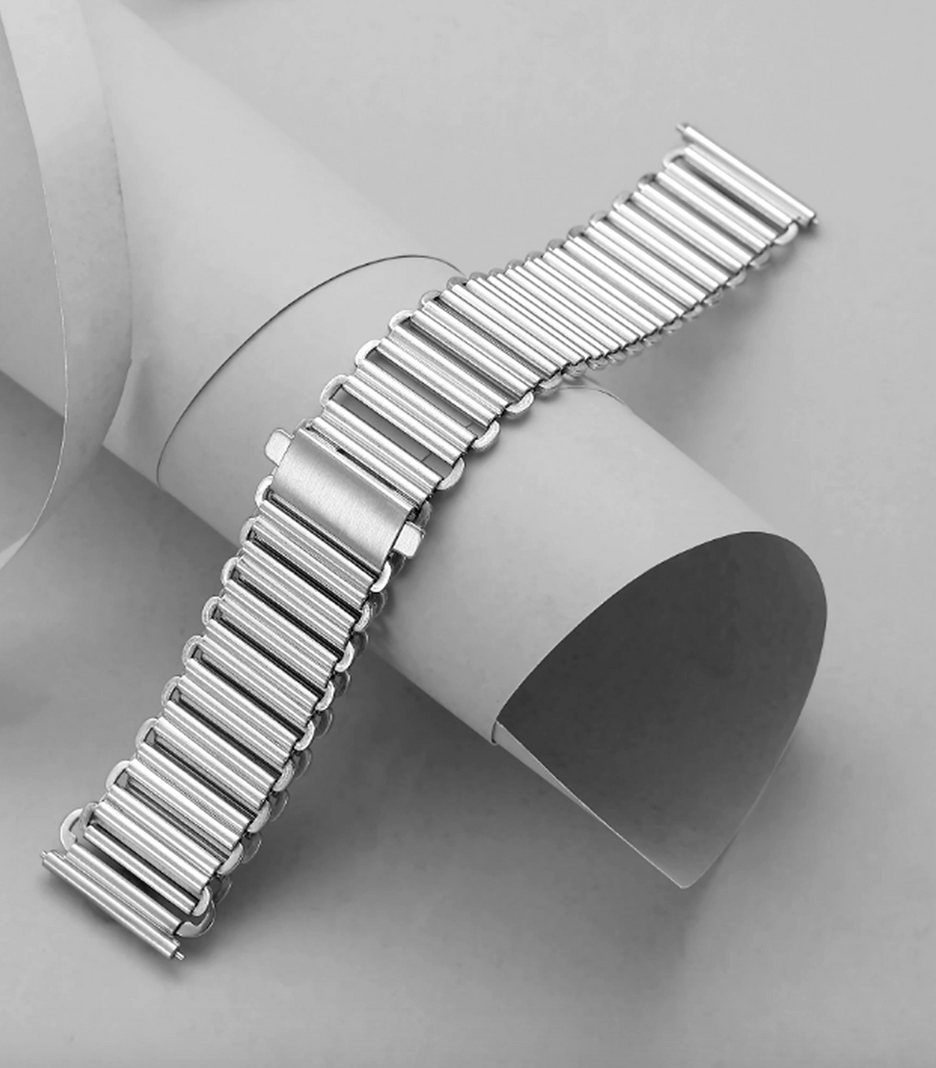
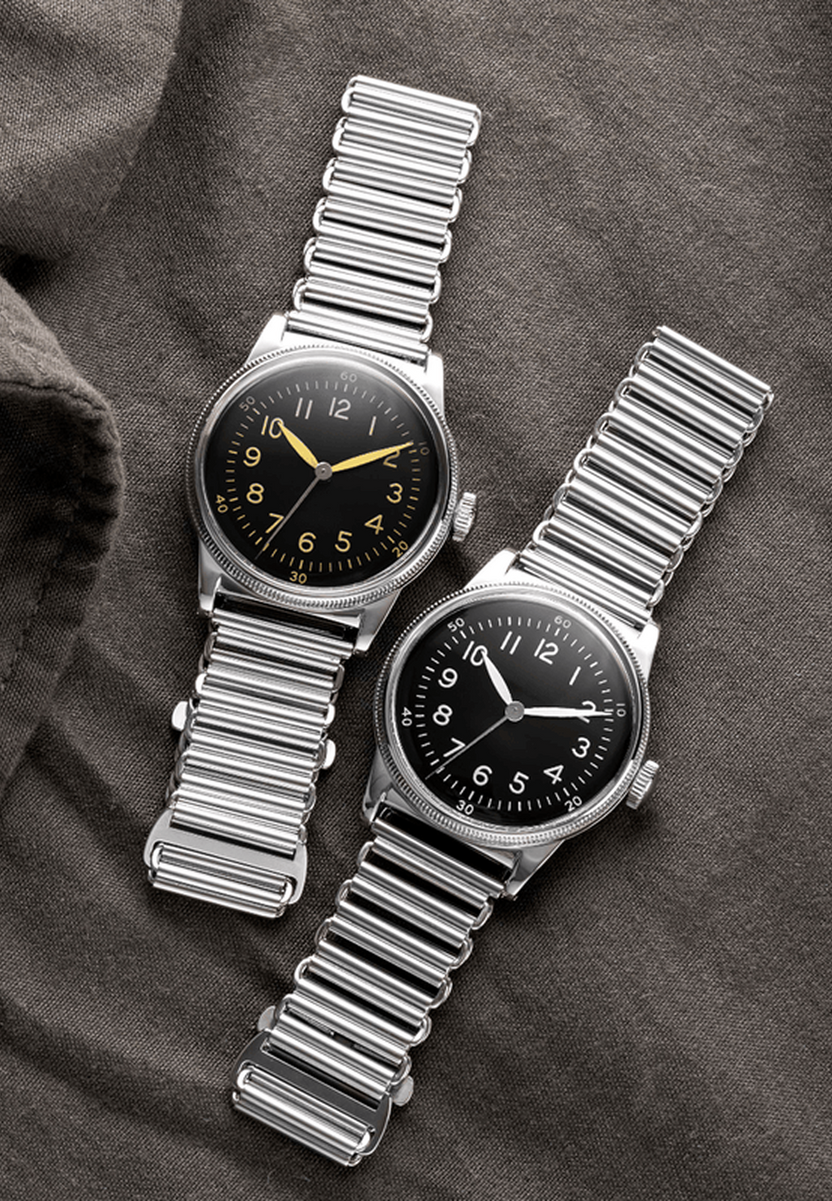
The A-11's Influence on Modern Military Timekeeping
The legacy of the A-11 extends far beyond its service during World War II, establishing principles and standards that continue to influence military timekeeping requirements today. The lessons learned from the A-11 program have been incorporated into subsequent military timepiece specifications, creating a direct lineage from the watches of the Greatest Generation to the sophisticated timing devices used by modern armed forces.
Evolution of Military Specifications
The success of the A-11 program demonstrated the value of standardized military timepiece specifications, leading to the development of increasingly sophisticated requirements for military timekeeping devices. Subsequent specifications have built upon the foundation established by the A-11, incorporating new technologies and capabilities while maintaining the core principles of reliability, accuracy, and durability.
Modern military timepiece specifications continue to emphasize many of the same characteristics that made the A-11 successful: shock resistance, temperature stability, water resistance, and clear legibility in various lighting conditions. However, contemporary requirements have expanded to include additional capabilities such as GPS synchronization, multiple time zone displays, and integration with other military systems.
The A-11's influence can be seen in the continued emphasis on hacking movements in military timepieces, a feature that remains critical for coordinating military operations in the modern era. While the technology has evolved significantly, the fundamental requirement for precise synchronization that drove the A-11's design remains as important today as it was during World War II.
Modern Interpretations and Homages
The enduring appeal of the A-11 design has inspired numerous modern interpretations and homage pieces from both established watch manufacturers and newer companies specializing in military-inspired timepieces. These modern A-11 tributes attempt to capture the essential character of the original while incorporating contemporary materials and manufacturing techniques.
Companies like Praesidus have made their reputation by creating faithful recreations of the A-11 that honor the original design while providing the reliability and precision that modern consumers expect. These contemporary interpretations serve not only as functional timepieces but also as tangible connections to the history and heritage of American military service. The A-11 Type 44 represents the pinnacle of this approach, offering both authentic 32mm sizing and modern 38mm options to accommodate contemporary preferences while maintaining historical accuracy.
The challenge faced by modern manufacturers creating A-11 homages lies in balancing historical authenticity with contemporary expectations for performance and durability. While original A-11 watches were remarkable for their era, modern manufacturing techniques and materials can provide superior performance in many areas, creating tension between historical accuracy and functional excellence.
Conclusion: The Enduring Legacy of America's Greatest Timepiece
The story of the A-11 military watch transcends the boundaries of horological history to become a testament to American ingenuity, manufacturing excellence, and the indomitable spirit of the Greatest Generation. From its conception in the urgent days following Pearl Harbor to its continued influence on modern military and civilian timepieces, the A-11 represents far more than a simple timekeeping device—it embodies the values and capabilities that enabled America and its allies to prevail in humanity's greatest conflict.
The technical achievements represented by the A-11 were remarkable for their era and remain impressive by contemporary standards. The coordination between three major American manufacturers to produce over one million precision timepieces while maintaining consistent quality and meeting demanding military specifications represents one of the most successful examples of wartime industrial cooperation in American history. The watches themselves, with their robust construction, precise movements, and innovative features like the hacking mechanism, established new standards for military timekeeping that continue to influence specifications today.
More importantly, the A-11 served as a silent witness to some of the most pivotal moments in human history. From the beaches of Normandy to the islands of the Pacific, these timepieces accompanied American servicemen through their darkest hours and greatest triumphs. The personal stories of veterans who relied on their A-11 watches for navigation, coordination, and psychological comfort provide the most compelling testament to these timepieces' significance. They were not merely tools but companions that shared the most intense experiences of their owners' lives.
The post-war legacy of the A-11 has been equally significant, influencing the development of the modern watch industry and establishing the field watch as a distinct and enduring category. The democratization of quality timekeeping that resulted from the surplus market introduction of A-11 watches changed American consumers' expectations and helped establish the market for tool watches that continues to thrive today.
For contemporary collectors and enthusiasts, the A-11 represents a tangible connection to the Greatest Generation and the values they embodied. The continued strong demand for these timepieces in the collector market reflects not only their historical significance but also their enduring appeal as examples of functional design and manufacturing excellence. The challenge of authentication and the premium placed on originality demonstrate the deep respect that collectors have for these historical artifacts.
The influence of the A-11 on modern military timekeeping standards and contemporary watch design ensures that its legacy will continue far into the future. Companies like Praesidus, which specialize in creating faithful recreations of military timepieces, serve as guardians of this heritage, ensuring that new generations can experience the connection between past and present that these remarkable timepieces represent.
As we look toward the future, the A-11's story serves as a reminder of what can be achieved when American ingenuity, manufacturing capability, and unwavering commitment to excellence are focused on a common goal. In an era when manufacturing has become increasingly globalized and standardized, the A-11 stands as a testament to the value of craftsmanship, attention to detail, and the human connections that transform mere objects into treasured heirlooms.
The A-11 military watch earned its designation as "the watch that won the war" not through marketing hyperbole but through faithful service under the most demanding conditions imaginable. Its story is ultimately the story of the men and women who wore these timepieces as they fought to preserve freedom and democracy for future generations. In honoring these remarkable timepieces, we honor the memory and sacrifice of the Greatest Generation, ensuring that their legacy continues to inspire and guide us in our own challenges and triumphs.
Today, as we face new global challenges and uncertainties, the A-11's story reminds us of the power of American innovation, the importance of precision and reliability in critical situations, and the enduring value of products designed and built to serve a purpose greater than mere commerce. The A-11 military watch stands as a permanent monument to American manufacturing excellence and the brave men and women who wore these timepieces in service to their country and the cause of freedom.
For those inspired by this remarkable history, Praesidus continues the A-11 legacy with authentic recreations that honor the past while serving the present. Whether you're drawn to the classic A-11 Type 44, the tactical A-11 Combat 32, or other military heritage timepieces, each watch carries forward the spirit of precision, reliability, and service that defined America's Greatest Generation.


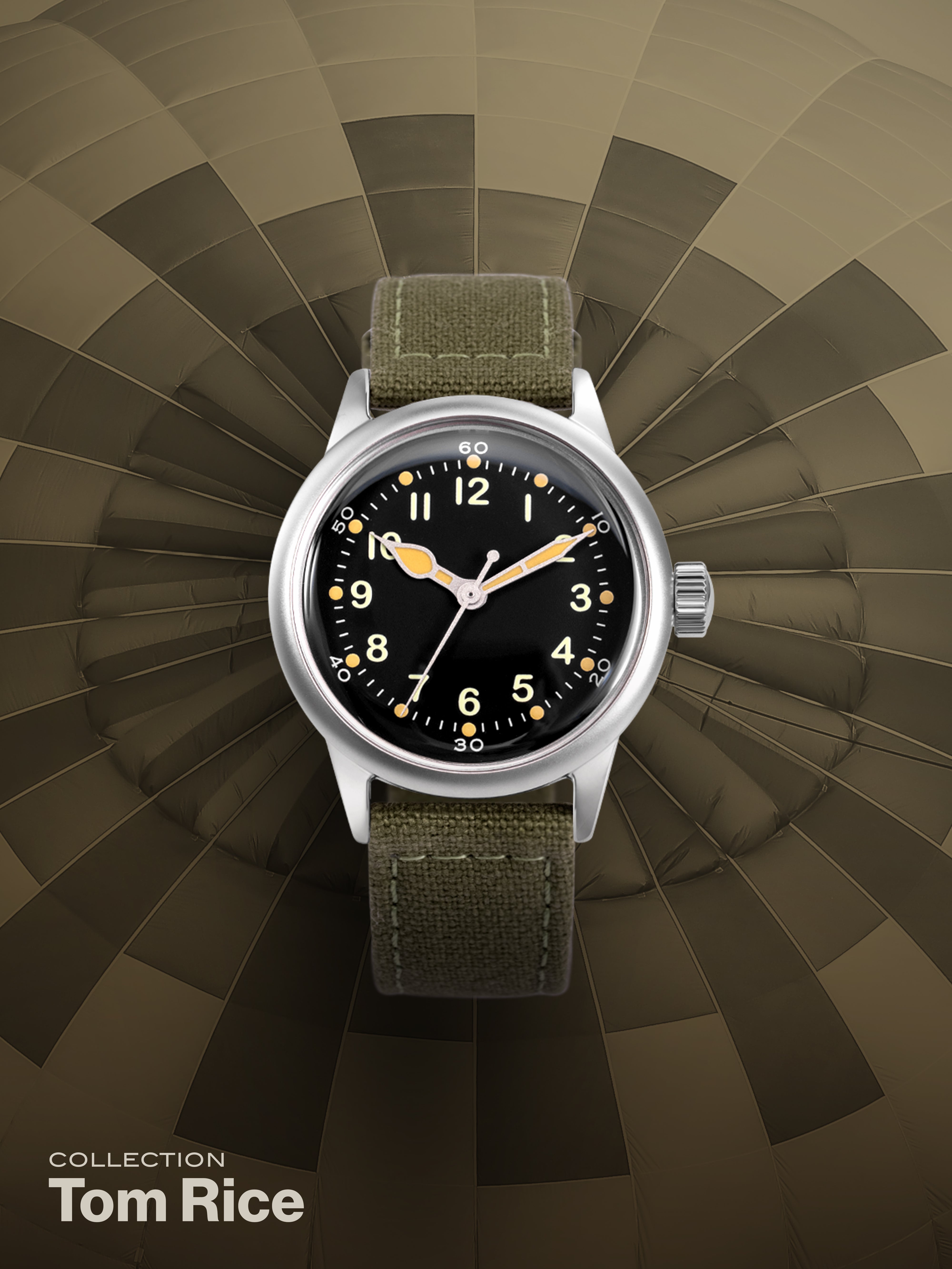
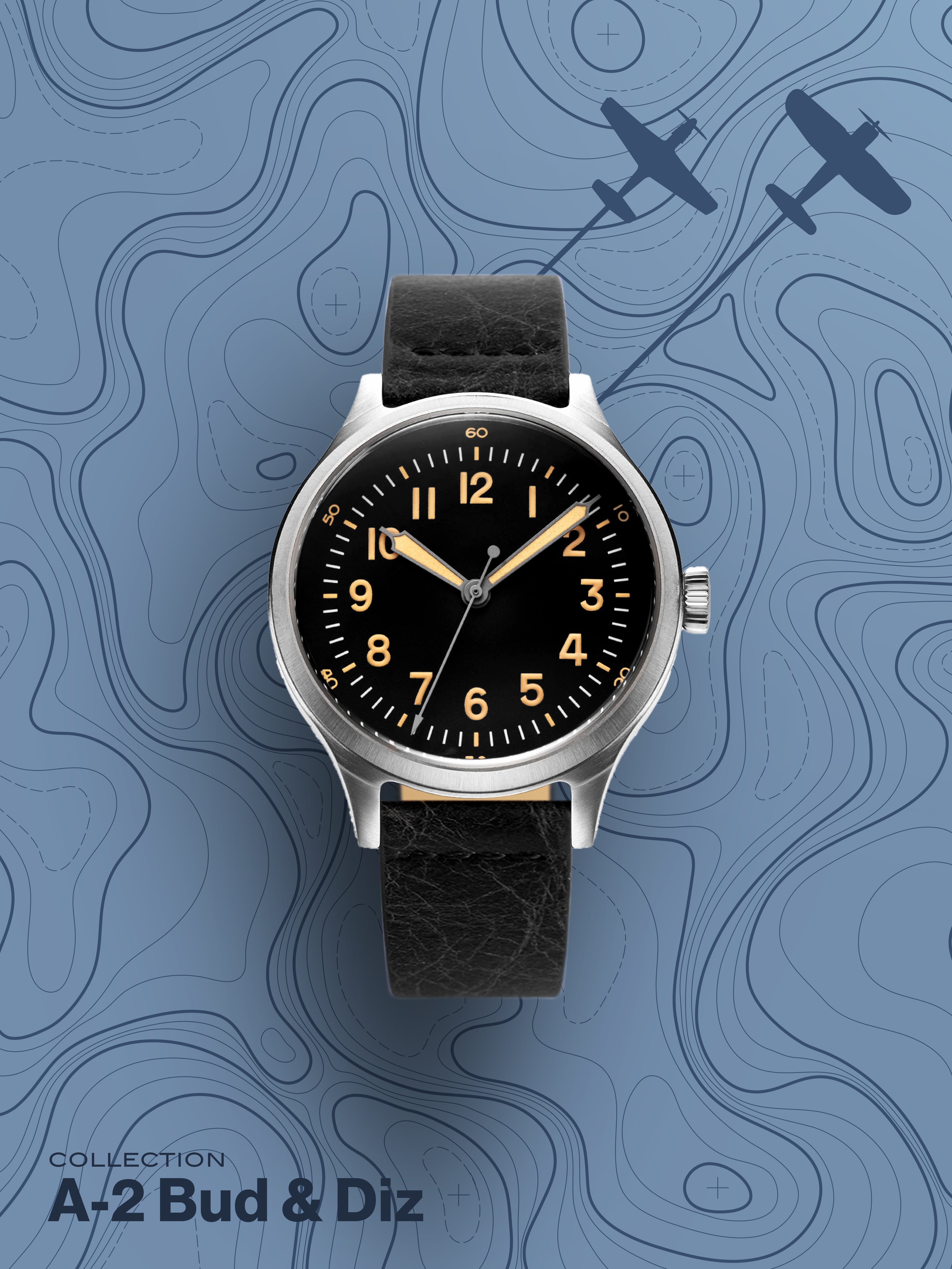
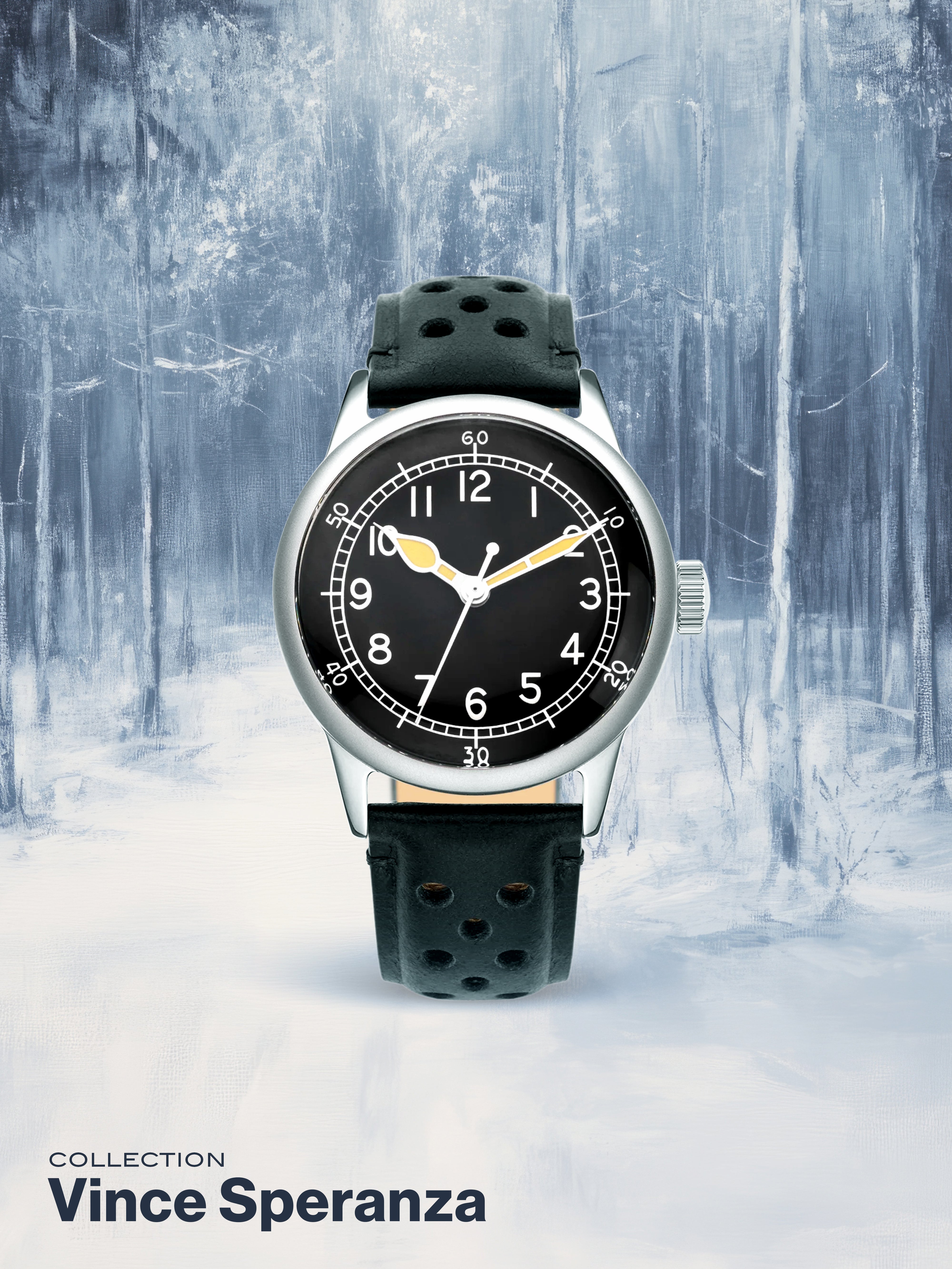
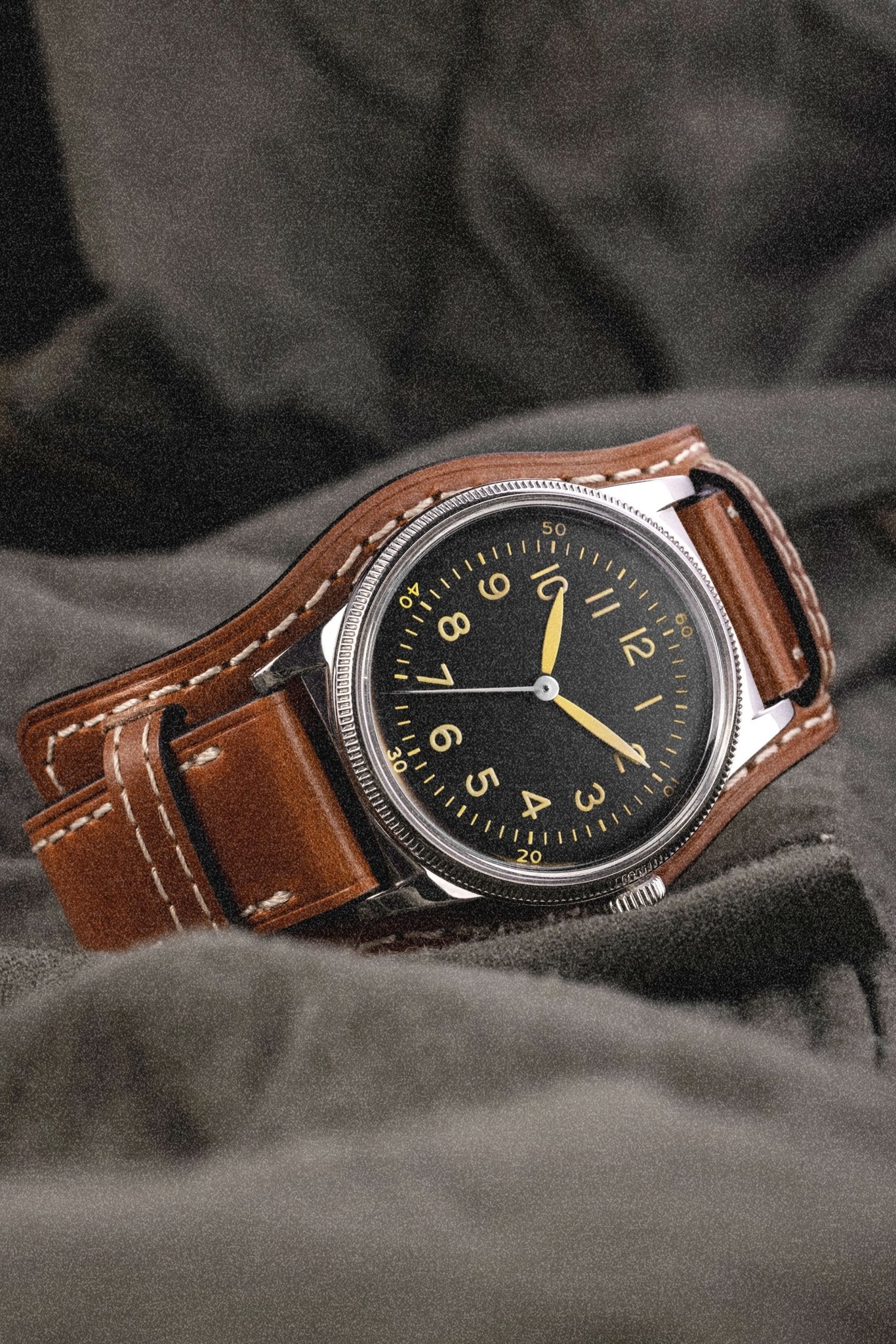
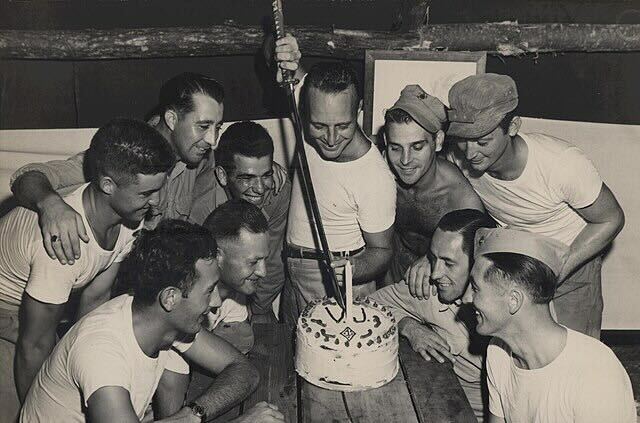
Leave a comment
This site is protected by hCaptcha and the hCaptcha Privacy Policy and Terms of Service apply.